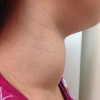Sympathetic Ophthalmia in an Infected Post-Scleral Buckling Eye

Jona MB Sy-Ongkeko, MD Archimedes LD Agahan, MD Juan S Lopez, MD Jacinto U Dy-Liacco, MD Department of Ophthalmology and Visual Sciences, College of Medicine, University of the Philippines-Philippine General Hospital, Manila, Philippines Sympathetic ophthalmia (SO) is a rare, bilateral, nonnecrotising granulomatous panuveitis that may develop after exposure of intraocular contents to the immune system, i.e., trauma, followed by a latent period and the appearance of uveitis in both the injured and non-injured eye. Both eyes are affected, with the injured eye usually presenting with uveitis before, and more severe than the uninjured eye. Its occurrence is much more likely » » » [Read more]
Recent Advances in Nephron Sparing Surgery: A Review of Articles of Interest Discussing the Impact of Ischemia in the Preservation of Renal Function

The surge of technological advancements has changed the way we treat diseases. In the realm of nephron sparing surgery there is a raging debate on the role of ischemia in the preservation of renal function. We set about discussing this issue by conducting a literature search of pertinent articles of interest. Our narrative synthesis of these articles sheds light on the matter as well as discusses recent innovation that modifies or even eliminates the use of mechanical ischemia in renal surgery.
Effectivity of Guava Leaves (Psidium guajava) as Mouthwash for Patients with Aphthous Ulcers

By: Ferdinand Z. Guintu, MD Antonio H. Chua, MD Department of Otorhinolaryngology Head and Neck Surgery Jose R. Reyes Memorial Medical Center ABSTRACT Objective: To determine whether Psidium guajava leaves mouthwash is effective in the management of patients with aphthous ulcers. Methods: Design: Randomized prospective open label clinical study Setting: Tertiary Government Training Hospital Subjects: Thirty two patients diagnosed with aphthous ulcers were randomly divided into two groups, a treatment group using prepared guava leaves mouthwash, and a control group using isotonic sodium chloride solution mouthwash given thrice a day for seven days. Patients were evaluated using a 10-point Visual » » » [Read more]
Osteonecrosis of the Jaw (ONJ) in a Multiple Myeloma Patient

This is a case of a 59 year-old female was seen due to pain and purulentdischarge on the right mandible. Patient is a diagnosed case of multiple myeloma three years prior to admission who was treated with melphalan, prednisone, zolendronic acid, and has undergone radiotherapy for 25 sessions. Panoramic radiograph of the mandibles showed radioluscency at the body of mandible suggestive of an osteonecrotic process. After discovering this, zolendronic acid was discontinued and sequestrectomy and hyperbaric oxygen was done as advised by the maxillofacial surgeon.
Diabetic Ketoacidosis In A Patient With Thyroid Storm: A Case Report

M.K., a 25 year-old female, Filipina-Japanese, presented at the Emergency Room due to abdominal pain. Her aunt stated that she had been noted to be very irritable for the past week before consult but attributed it to stress from the patient’s new job. She had been complaining of epigastric pain but only took AlMgOH, an antacid, which provided slight relief. The patient also claimed that she had been having nausea and had poor appetite, hence did not inject insulin for the past 2 days. She also experienced palpitation, heat intolerance, hyperdefecation and lightheadedness. The patient is a diagnosed case of » » » [Read more]
A Comparative Study of the Effect of Vildagliptin and Glimepiride on Glucose Variability in Type 2 Diabetic Patients With Inadequate Glycemic Control on Metformin

Authors: Odessa G. Tolentino-Wilson, M.D., FPCP Augusto D. Litonjua, M.D., FPCP, FPSEM, FACE Section of Endocrinology and Metabolism Makati Medical Center INTRODUCTION: Vildagliptin is a member of the dipeptidyl peptidase IV inhibitor (DPP-IV inhibitor) class of drugs. These drugs are believed to improve glucose variability by restoring the physiologic pattern of insulin secretion. Vildagliptin improves glycemia by improving beta and alpha cells’ sensitivity to glucose.1 This addresses the impaired glucose-mediated suppression of glucagon secretion in diabetes that results in increased hepatic glucose output and subsequently hyperglycemia.2 In a study that compared the effect of vildagliptin and glimepiride on prandial glucagon » » » [Read more]
